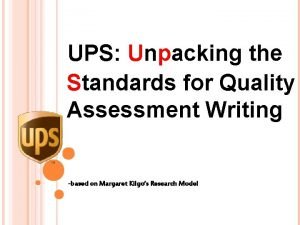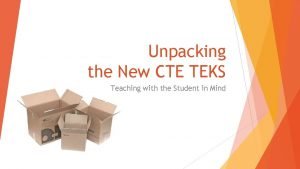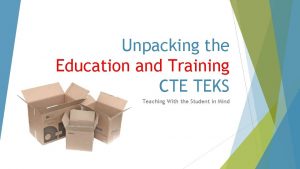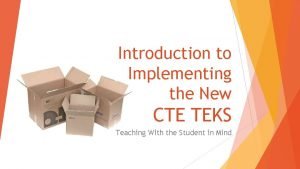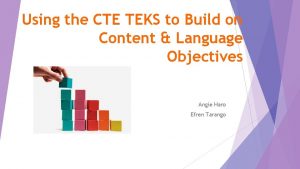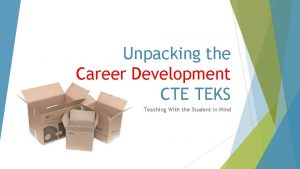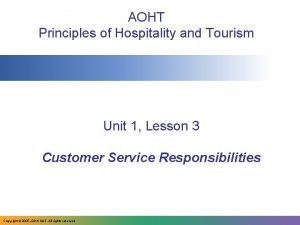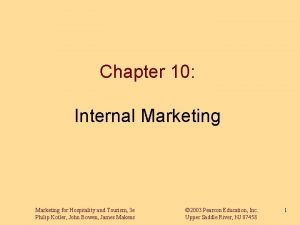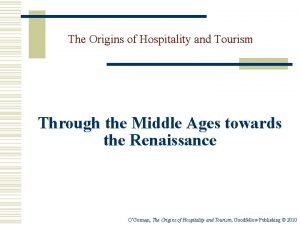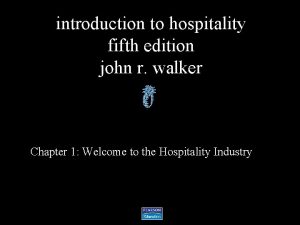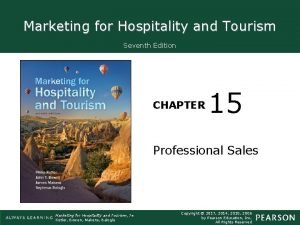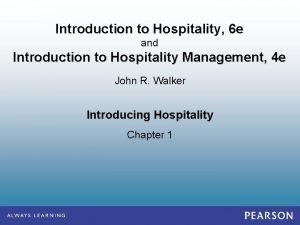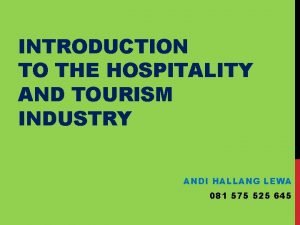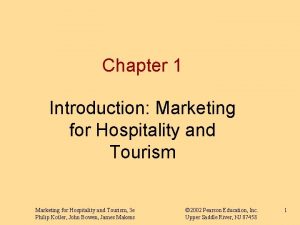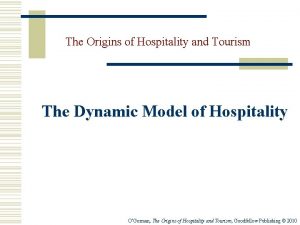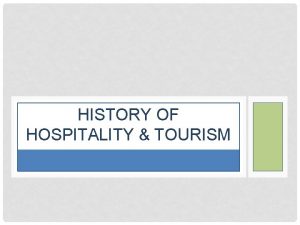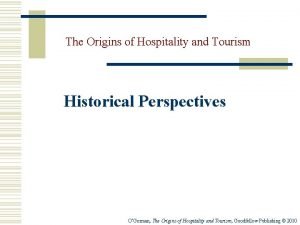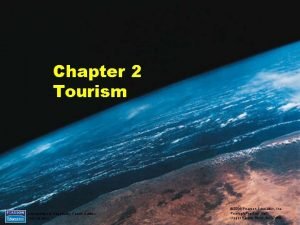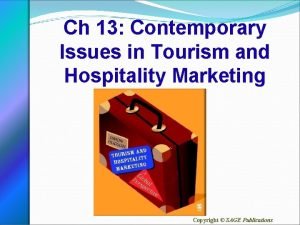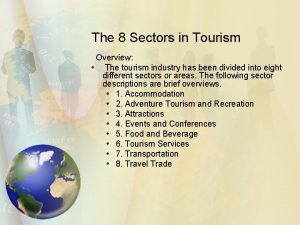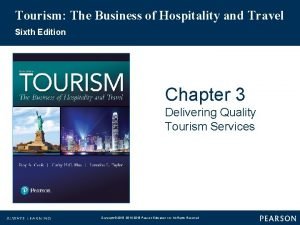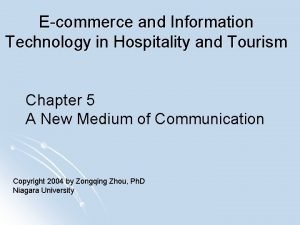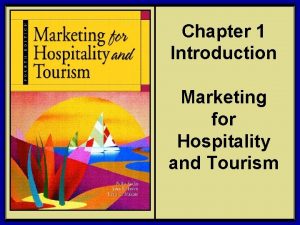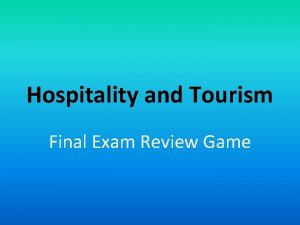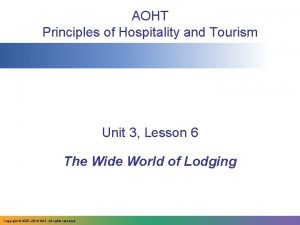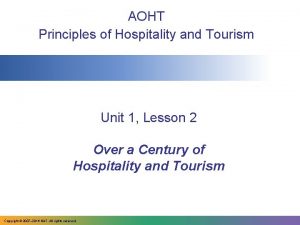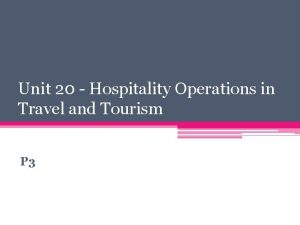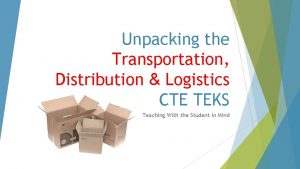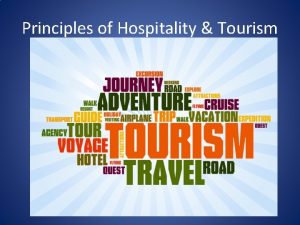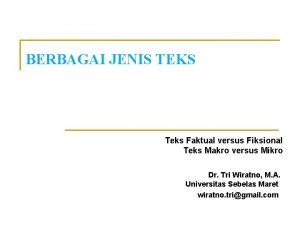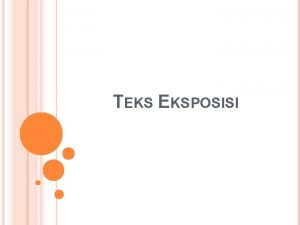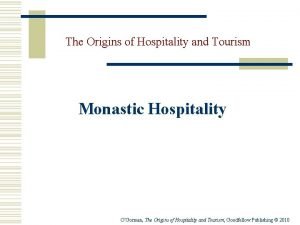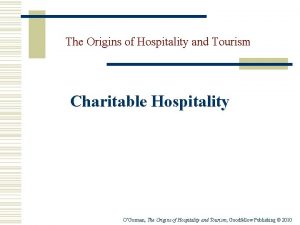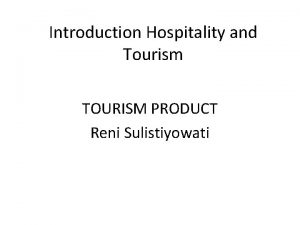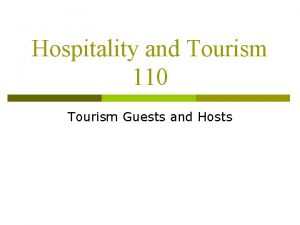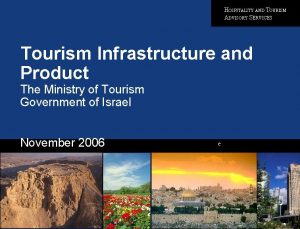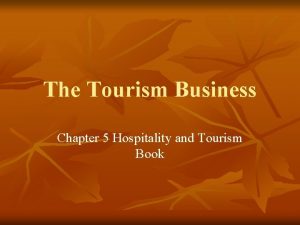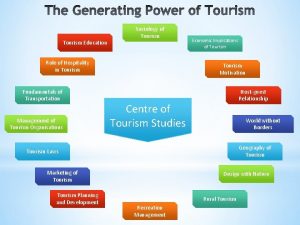Unpacking the Hospitality Tourism CTE TEKS Teaching With





![Structure of the CTE TEKS [Bracket] the Introduction Underline the Knowledge & Skills Statements Structure of the CTE TEKS [Bracket] the Introduction Underline the Knowledge & Skills Statements](https://slidetodoc.com/presentation_image/0be5ab37bbd777cb071f9eabeb54a7a6/image-6.jpg)























- Slides: 29

Unpacking the Hospitality & Tourism CTE TEKS Teaching With the Student in Mind

Objectives Participants Be will: able to find the CTE TEKS for their cluster Identify key parts of the CTE TEKS Practice unpacking the CTE TEKS Identify units within CTE courses Design learning objectives within those units

Teaching Inside the Box The Power of Creative Constraint w e N e h S T K E T C

Find the TEKS for Your Course Take a moment and pull up the new 2017 -2018 TEKS for the course you wish to investigate today http: //tea. texas. gov/Academics/College, _Career, _and _Military_Prep/Career_and_Technical_Education/CTE_T exas_Essential_Knowledge_and_Skills_for_2017 -2018/

Examine the Structure (1) Find the Introduction Knowledge and Skill (K&S) Student Expectation (SE) (2) Find the K & S Statements (3) Find the Student Expectations Compare your course with the sample course we just reviewed… Student Expectation (SE)
![Structure of the CTE TEKS Bracket the Introduction Underline the Knowledge Skills Statements Structure of the CTE TEKS [Bracket] the Introduction Underline the Knowledge & Skills Statements](https://slidetodoc.com/presentation_image/0be5ab37bbd777cb071f9eabeb54a7a6/image-6.jpg)
Structure of the CTE TEKS [Bracket] the Introduction Underline the Knowledge & Skills Statements Circle the Student Expectations

Unpacking the Student Expectations Let’s Break It Down…

Unpacking Student Expectations (2) The Students uses verbal and non verbal communication skills. The student is expected to: (A) listen actively and effectively in group discussions; (B) use a variety of resources to access, process, and collect data relevant to the project; and (c) document the time and cost to accomplish the project goal. Essentially, students need to VERB some CONTENT

Unpacking Student Expectations (2) The student uses verbal and non verbal communication skills. The student is expected to: (A) listen actively and effectively in group discussions; (B) use a variety of resources to access, process, and collect data relevant to the project; and (c) document the time and cost to accomplish the project goal

Unpacking Student Expectations Student Expectation 2(A) listen actively and effectively in group discussions Verb Noun (Skill) (Concept) Listen actively and effectively Group discussions Knowledge and Skills Using verbal and nonverbal communication skills

Unpacking Student Expectations Student Expectation 2(B) use a variety of resources to access, process, and collect data relevant to the project; Verb Noun Knowledge (Action) (Content) and Skills Use Access Variety of resources Using verbal and nonverbal Data relevant to communication skills the project Process Data relevant to the project Collect Data relevant to the project

Unpacking the CTE TEKS Principles of AFNR TEKS 4(F) Compare and contrast issues impacting agriculture, food, and natural resources such as biotechnology, employment, safety, environment, and animal welfare issues. Skills (verbs) Compare and contrast Knowledge (nouns) issues biotechnology employment safety environment animal welfare Big Idea Numerous issues impact AFNR Activities Research Written paper Presentation Debate

Now It’s Your Turn! Start by Verb-ing your TEKS (A) Apply interpersonal communication skills in business and industry settings. Apply communication skills business and industry settings 1. The student demonstrates professional standards/ employability skills as required by business and industry.

Learning Objective (Mini-Lesson Topics) Now that you have identified the Student Expectations What are the Instructional Objectives that are specific, measurable, short-term, observable student behaviors in support of the SE? You might call them mini lessons of part of a larger unit. An objective is a description of a performance you want learners to be able to exhibit before you can consider them successful or competent. An objective describes an intended result of instruction, rather than the process on teaching or instruction itself.

Three Parts of Student-Centered Learning Objectives 1. Behavior - What will the learner be able to do? 2. Condition – What materials, tools, or resources will the learner use to accomplish the behavior? 3. Criteria – What specifications must be the learner fulfill in order to consider the objective successfully met?

Learning Objectives are NOT… An agenda or a schedule A description of an activity or resource A title of a book, film, story etc. A description of the vehicle or method to teach a concept Too broad or vague Disguised as an objective but really a description of what the TEACHER is going to teach rather than of what the STUDENT is expected to KNOW AND BE ABLE TO DO and LEARN

Learning Objectives ARE… Answers to the questions “what are the STUDENTS EXPECTED TO KNOW AND BE ABLE TO DO? ” Consistent with the standards (the TEKS) Understandable to parent and to students Specific Measurable Something students can demonstrate that they have learned the objective in a reasonable amount of time (usually one of two class periods as you “chunk” the learning) even if the unit goes for an extended period

Your Turn Again! (A) Apply interpersonal communication skills in business and industry settings. Apply communication skills business and industry settings 1. The student demonstrates professional standards/ employability skills as required by business and industry. What actions or activities will student do? What materials and resources will student use? How will you measure student success?

Turning Student Expectations into Learning Objectives Find a Thinking Partner No! That was a Thinking Partner!

Writing a Learning Objective (or mini lessons) Based on your SE’s, think of activities and behaviors students could do.

Writing a Learning Objective (or mini lessons) What materials, tools, or resources will they need?

Writing a Learning Objective (or mini lessons) How will you measure student success?

Writing a Learning Objective (or mini lessons)

Learning Objectives Things Is to think about as you are writing there a clear objective that creates an image of specifically what students will know and be able to do? What do I want students to know and be able to do when the lesson is over? How will I measure progress? Is the level of difficulty appropriately rigorous and challenging? Is the language of the objective a good fit for the content and “kid-friendly”?

Evaluate your partner’s objectives using the Glow and Grow feedback protocol 1. Identify who is Partner A and who is Partner B 2. Both partners look at Partner A’s objectives. Partner A will stay totally silent while Partner B says: o This part of your objective GLOWS (and shares the positive features) o There is room to GROW in this part of your objective (and shares any confusion or areas that need clarification. ) o After Partner B gives feedback, Partner A can address any confusion and explain any thoughts or questions they had while designing the objectives. o Switch places and repeat. Let’s practice…

And a BIG Thank You! Content input and resources for this presentation provided by: Rachel Behnke, CTE Director, New Braunfels ISD Ruthie Kneupper, Educational Specialist, CTE, ESC Region 20 Monelle Rougeau, Educational Specialist, CTE, ESC Region 4 Heather Blount, Educational Specialist, CTE, ESC Region 17 Texas Education Agency, Office of College, Career and Military Prep Resources for Learning Foundation Learning Series The Instructional Leadership Academy at the Charles A Dana Center at the University of Texas at Austin Kagan Cooperative Learning Strategies for Engagement Texas A&M University-Corpus Christi CTE Professional Development

Additional Resources Texas CTE Resource Center – www. txcte. org Implementing New CTE TEKS Training Modules Scope and Sequence for all CTE courses Lesson Plans Assessments CTE Mentor Program for New CTE Teachers Foundational Learning Series Training Videos Closed Facebook Learning Communities for each Career Cluster

Presented by: ESC CTE Specialist (INSERT NAME and CONTACT INFORMATION) CTE Teacher Mentor (INSERT NAME and CONTACT INFORMATION)

Copyright © Notice. The materials are copyrighted © and trademarked ™ as the property of the Texas Education Agency (TEA) and may not be reproduced without the express written permission of TEA, except under the following conditions: 1. Texas public school districts, charter schools, and Education Service Centers may reproduce and use copies of the Materials and Related Materials for the districts’ and schools’ educational use without obtaining permission from TEA. 2. Residents of the state of Texas may reproduce and use copies of the Materials and Related Materials for individual personal use only without obtaining written permission of TEA. 3. Any portion reproduced must be reproduced in its entirety and remain unedited, unaltered and unchanged in any way. 4. No monetary charge can be made for the reproduced materials or any document containing them; however, a reasonable charge to cover only the cost of reproduction and distribution may be charged. Private entities or persons located in Texas that are not Texas public school districts, Texas Education Service Centers, or Texas charter schools or any entity, whether public or private, educational or non-educational, located outside the state of Texas MUST obtain written approval from TEA and will be required to enter into a license agreement that may involve the payment of a licensing fee or a royalty. For information contact: Texas Education Agency, 1701 N. Congress Ave. , Austin, TX 78701 -1494; email: copyrights@tea. texas. gov.
 Unpacking the teks
Unpacking the teks Cte teks texas 2019
Cte teks texas 2019 Cte teks
Cte teks Teks cte
Teks cte Teks cte
Teks cte Afnr teks
Afnr teks Aoht principles of hospitality and tourism
Aoht principles of hospitality and tourism Internal marketing in tourism
Internal marketing in tourism The origins of hospitality and tourism
The origins of hospitality and tourism The interrelated nature of hospitality and tourism
The interrelated nature of hospitality and tourism Marketing for hospitality and tourism 7th edition
Marketing for hospitality and tourism 7th edition The interrelated nature of hospitality and tourism
The interrelated nature of hospitality and tourism Tourism industry definition
Tourism industry definition Marketing hospitality and tourism
Marketing hospitality and tourism The origins of hospitality and tourism
The origins of hospitality and tourism History of hospitality and tourism industry
History of hospitality and tourism industry The origins of hospitality and tourism
The origins of hospitality and tourism John r walker introduction to hospitality management
John r walker introduction to hospitality management Chapter 2 hospitality and tourism
Chapter 2 hospitality and tourism Contemporary issues in tourism meaning
Contemporary issues in tourism meaning 8 sectors of hospitality and tourism
8 sectors of hospitality and tourism Tourism the business of hospitality and travel
Tourism the business of hospitality and travel E commerce tools in tourism and hospitality
E commerce tools in tourism and hospitality Introduction to hospitality marketing
Introduction to hospitality marketing Hospitality and tourism final exam
Hospitality and tourism final exam Aoht principles of hospitality and tourism
Aoht principles of hospitality and tourism The 8 sectors of tourism
The 8 sectors of tourism Principles of hospitality and tourism lesson plans
Principles of hospitality and tourism lesson plans 7 sectors of tourism
7 sectors of tourism Unit 20 hospitality operations in travel and tourism
Unit 20 hospitality operations in travel and tourism
